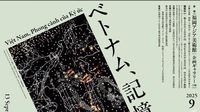On September 14, 2025, the University of Social Sciences and Humanities under Vietnam National University Ho Chi Minh City, in partnership with the local government of Bonghwa County, South Korea, launched a major cultural initiative: the introduction of the "Làng Việt" (Vietnamese Village) project. This ambitious endeavor, according to HTV, is far more than just a collection of buildings or a tourist attraction—it stands as a living testament to nearly 800 years of exchange, kinship, and cultural dialogue between the Vietnamese and Korean peoples.
"Làng Việt" was first initiated in 2018, with Bonghwa County chosen for its historical significance. The region is home to relics and descendants of the Ly Hoa Son lineage, tracing back to Prince Ly Long Tuong, who settled in Korea almost eight centuries ago. The project's sheer scale is impressive: covering more than 118,000 square meters, it features iconic Vietnamese architecture such as a replica of the One-Pillar Pagoda, a statue of King Ly Thai To, a dedicated museum, and a Vietnamese cultural center. These elements, as highlighted by project organizers, are designed to preserve and spread Vietnamese cultural values while also fostering deeper diplomatic ties between Vietnam and South Korea.
At the heart of "Làng Việt" is a commitment to education and cultural continuity. The site hosts a range of activities, from recreating historical Vietnamese spaces to showcasing the shared cultural heritage of both nations. There is a particular focus on young generations of Vietnamese descent born in South Korea, offering them a tangible connection to their roots and a place to learn about their ancestral culture. As GS.TS Ngo Thi Phuong Lan, rector of the University of Social Sciences and Humanities, emphasized, "This project is very important in preserving and spreading Vietnamese cultural values, as well as promoting diplomatic relations between the two countries."
During the project's introduction, Kwon Tae Han, acting Consul General of South Korea in Ho Chi Minh City, underscored the remarkable progress in bilateral relations since the two countries established diplomatic ties in 1992. He noted that the relationship reached new heights after being upgraded to a Comprehensive Strategic Partnership in 2022. "The relationship between Vietnam and South Korea has developed tremendously since the establishment of diplomatic relations in 1992, and especially after the two countries upgraded to a Comprehensive Strategic Partnership in 2022," he said. Kwon Tae Han also pointed to Bonghwa's critical role in cultural exchange, expressing confidence that "the introduction of the 'Làng Việt' project will further promote and strengthen the friendship between the two countries."
While Bonghwa County was celebrating this deepening of Vietnam-Korea ties, another cultural bridge was being built further east. According to the Embassy of Japan in Vietnam, a major exhibition of Vietnamese art, after its successful showing in Fukuoka, is set to open at the Okinawa Prefectural Art Museum from November 22, 2025, to January 18, 2026. This exhibition, featuring over 110 artworks and graphics—most from the Fukuoka Asian Art Museum's collection—traces a century of Vietnam's tumultuous and transformative history. From the war for independence, through periods of construction, renovation, and international integration, the artworks provide a vivid visual journey through the nation's evolution.
The exhibition is thoughtfully divided into four sections, guiding visitors through the changing images of the homeland as seen by artists from the Indochina Fine Arts School, serene landscape paintings, the fighting spirit captured in folk art, the rapid changes during the Đổi Mới (Renovation) period, and finally, contemporary works echoing memory and personal identity. The diversity of the works on display reflects not just the country's historical milestones, but also the individual stories and aspirations of its people.
A particularly notable feature of the exhibition is the "Nguyen Phan Chanh Painting Restoration Project," spearheaded by the MITANI Foundation since 2007. Nguyen Phan Chanh (1892-1984), a celebrated Vietnamese painter, is known for his evocative silk paintings that capture the spirit of rural Vietnam. Thanks to the restoration project, 16 of his works have been successfully restored and are now preserved under conservation standards in Japan. This effort, as the Embassy of Japan in Vietnam points out, has become "a cultural bridge between the two peoples," ensuring that the artistic legacy of Vietnam is maintained for future generations and shared with a broader international audience.
The exhibition is more than just a display of art; it is a platform for cultural and artistic exchange. Visitors can participate in a variety of events, including the International Mid-Autumn Festival, screenings of classic Vietnamese films like "When Will It Be October?", discussions and exchanges with Vietnamese artists, and other special artistic performances. These activities are designed to give the Japanese public a deeper understanding of Vietnam's history, culture, and people, while also strengthening the ever-growing friendship between the two nations.
As the relationship between Vietnam and Japan continues to flourish, such initiatives become increasingly significant. The exhibition, as organizers explain, aims to "help the Japanese public better understand the history, culture, and people of Vietnam and contribute to strengthening and enriching the Vietnam-Japan friendship amid the increasingly positive development of bilateral relations." The event is not just about looking back at shared history but also about building future connections and mutual respect.
These two cultural milestones—"Làng Việt" in South Korea and the Vietnamese art exhibition in Japan—are emblematic of a broader trend: Vietnam's growing role as a cultural ambassador in East Asia. Both projects underscore the importance of historical memory, artistic expression, and the enduring power of people-to-people ties. They also highlight the ways in which art, architecture, and educational initiatives can serve as bridges across borders, fostering understanding and goodwill in a rapidly changing world.
For the Vietnamese diaspora in Korea, "Làng Việt" offers a home away from home and a living link to their heritage. For Japanese audiences, the art exhibition provides a window into a neighboring country's soul, revealing both the struggles and the beauty of Vietnam's past and present. As diplomatic and cultural relations continue to deepen, these projects remind us that true friendship between nations is built not just on treaties and trade, but on the shared appreciation of history, creativity, and human connection.
The momentum behind these cultural exchanges shows no sign of slowing. As new generations in Vietnam, Korea, and Japan come of age, such projects will likely continue to play a vital role in shaping regional identity and fostering mutual respect. In the end, whether through a reconstructed pagoda in Bonghwa or a restored painting in Okinawa, the message is clear: the ties that bind nations are woven from stories, memories, and the enduring power of culture.




